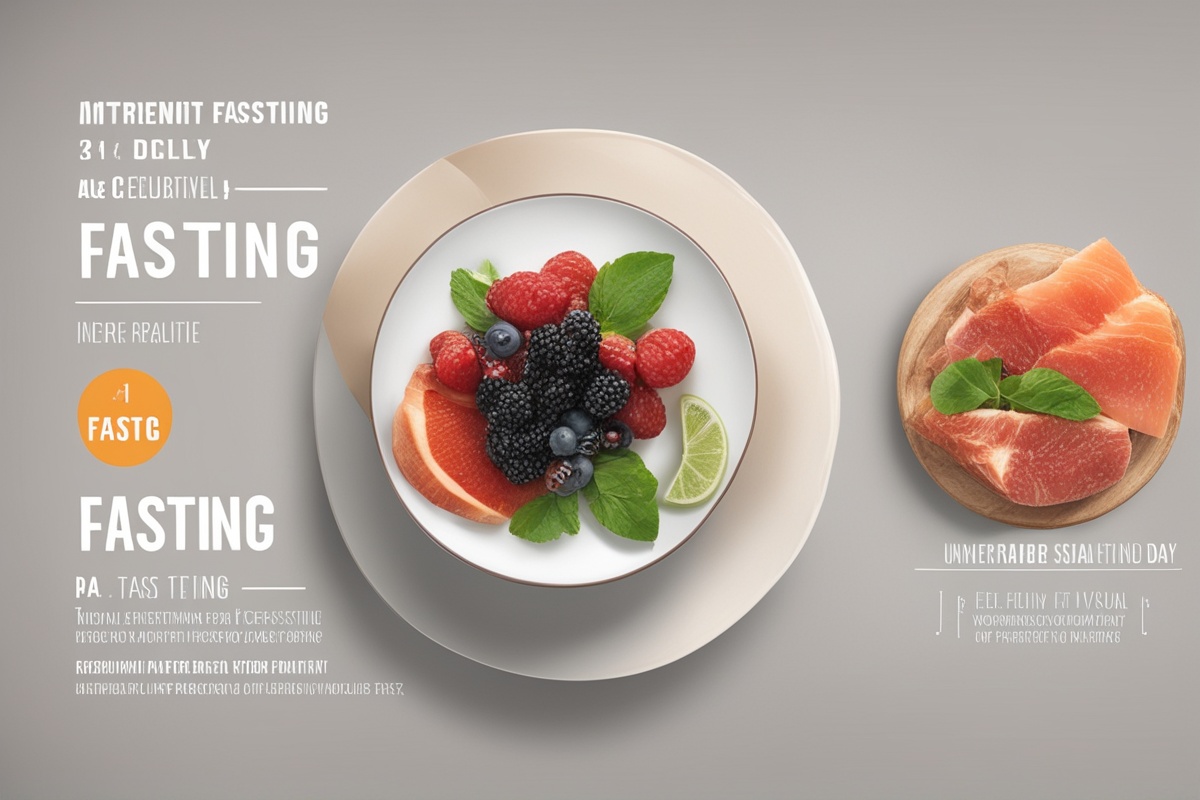Hey there, health enthusiasts! If you’ve been exploring ways to boost your wellness, lose weight, or simply reset your relationship with food, you’ve likely stumbled upon Alternate Day fasting (ADF). This unique fasting method has gained traction for its simplicity and potential health benefits. In this comprehensive guide, we’re diving deep into the world of ADF, focusing on crafting the perfect ADF schedule that works for you. Whether you’re a beginner or a seasoned faster, I’ll walk you through the science, practical tips, and everything you need to know to make Alternate Day Fasting a sustainable part of your lifestyle. Let’s get started!
What Is Alternate Day Fasting?
Alternate Day Fasting, often abbreviated as ADF, is a type of intermittent fasting where you alternate between days of normal eating and days of significant calorie restriction. On fasting days, you typically consume about 25% of your usual calorie intake—roughly 500–600 calories for most people. On non-fasting days, you eat as you normally would, without strict limitations. This ADF schedule creates a rhythm that can help your body adapt to periods of low energy intake, potentially leading to weight loss, improved metabolic health, and more. Unlike other fasting methods like the 16/8 method, ADF focuses on full days rather than specific eating windows, making it a distinct approach to intermittent fasting.
The Science Behind an ADF Schedule
Why does an ADF schedule work? The science behind Alternate Day Fasting is rooted in how our bodies respond to calorie restriction. Studies, such as those published in journals like Obesity and The American Journal of Clinical Nutrition, show that ADF can lead to significant weight loss by reducing overall calorie intake over time. Additionally, fasting triggers a process called autophagy, where cells clean out damaged components, potentially reducing inflammation and promoting longevity. ADF may also improve insulin sensitivity, lower blood pressure, and reduce markers of oxidative stress. While research is still evolving, early findings suggest that following a consistent Alternate Day Fasting plan could be a game-changer for metabolic health.
Benefits of Following an Alternate Day Fasting Plan
Adopting an ADF schedule isn’t just about shedding pounds—though that’s often a major draw. The benefits extend far beyond the scale. For one, many people report feeling more energized and mentally clear on non-fasting days, as their bodies adapt to using stored energy more efficiently. ADF can also simplify meal planning since you’re cutting down on food prep every other day. Here are some key advantages of sticking to an Alternate Day Fasting routine:
- Weight Loss: By naturally reducing calorie intake, ADF often leads to a calorie deficit, promoting fat loss over time.
- Improved Heart Health: Research suggests ADF may lower bad cholesterol (LDL) and improve cardiovascular markers.
- Enhanced Metabolic Flexibility: Your body learns to switch between burning carbs and fats for fuel more effectively.
- Potential Longevity Benefits: Early studies link fasting to cellular repair processes that could slow aging.
How to Create Your Perfect ADF Schedule
Ready to give Alternate Day Fasting a try? Crafting a personalized ADF schedule is key to making this fasting method sustainable. Start by deciding which days will be your fasting days—many people choose to fast on weekdays like Monday, Wednesday, and Friday for consistency. On fasting days, plan to consume your 500–600 calories in one or two small meals to avoid feeling deprived. On non-fasting days, focus on nutrient-dense foods to replenish your body, but don’t overcompensate by overeating. Hydration is crucial, so drink plenty of water, herbal tea, or black coffee on fasting days to curb hunger. Here are some practical tips to structure your Alternate Day Fasting calendar:
- Start Slow: If you’re new to fasting, begin with a modified ADF schedule, allowing slightly more calories (800–1,000) on fasting days for the first week.
- Track Your Intake: Use a calorie-tracking app to ensure you’re sticking to the 500–600 calorie limit on fasting days.
- Plan Nutrient-Rich Meals: On eating days, prioritize protein, healthy fats, and veggies to support recovery.
- Listen to Your Body: If you feel overly fatigued or irritable, adjust your ADF routine or consult a healthcare professional.
- Stay Busy: Keep yourself occupied on fasting days to distract from hunger—try light exercise or hobbies.
Common Challenges with an ADF Routine and How to Overcome Them
Let’s be real—following an ADF schedule isn’t always a walk in the park. Hunger pangs, social eating pressures, and energy dips can make sticking to an Alternate Day Fasting plan tricky, especially in the beginning. Many beginners struggle with intense cravings on fasting days or unintentionally overeating on non-fasting days. The good news? These hurdles are manageable with the right mindset and strategies. Distract yourself with non-food activities, sip on zero-calorie drinks, and remind yourself that hunger often passes in waves. If social events fall on fasting days, plan ahead by saving your calories for a small meal during the gathering. Persistence is key as your body adjusts to the ADF rhythm.
Who Should and Shouldn’t Try an ADF Schedule?
While an ADF schedule can be incredibly effective for many, it’s not a one-size-fits-all solution. This fasting method is often best suited for healthy adults looking to lose weight or improve metabolic markers. However, it’s not recommended for everyone. Pregnant or breastfeeding individuals, those with a history of eating disorders, or people with certain medical conditions like diabetes should avoid ADF unless under medical supervision. Always consult with a doctor or dietitian before starting an Alternate Day Fasting regimen, especially if you’re on medication or have underlying health concerns. Your safety and well-being should always come first when experimenting with a new fasting schedule.
As we wrap up, it’s clear that Alternate Day Fasting offers a promising path to better health, weight management, and metabolic flexibility. By crafting a realistic ADF schedule and staying committed, you can tap into the benefits of this unique fasting approach. Remember, the journey is personal—tweak your Alternate Day Fasting plan to fit your lifestyle, listen to your body, and celebrate small victories along the way. Whether you’re aiming to shed a few pounds or simply feel more energized, ADF could be the reset you’ve been looking for. Have you tried an ADF routine before, or are you just starting out? Drop your thoughts or questions below—I’d love to hear from you!






